Showing 131–140 of 1165 results
प्रस्तुत पुस्तक के द्वारा भारत के स्वतंत्रता संघर्ष में बुन्देलखण्ड की जनता के योगदान को सामने लाने का प्रयास किसा गया है। गांधीजी की बुन्देलखण्ड यात्रा एवं ओरछा के समीप सतार नदी के किनारे चन्द्रशेखर आजाद के हरिशंकर ब्रह्मचारी के नाम से कुटिया बनाकर रहने से समस्त बुन्देलखण्ड में तेजी से राष्ट्रवादी भावनाओं का प्रसार हुआ। 1923 के झण्डा सत्याग्रह एवं 1930 के जंगल सत्याग्रह में बुन्देलखण्ड के लोगों ने बढ़-चढ़कर भाग लिया। ब्रिटिश भक्त देशी रियासत के राजाओं ने जब जनता पर अत्याचार किया तो जनता ने प्रजामण्डल की स्थापना कर उनका विरोध किया। इसी विरोध के फलस्वरूप संक्रांति के मेले के दिन 14 जनवरी 1931 को छतरपुर जिले में जलियाॅवाला बाग की तरह ही चरण-पादुका हत्याकाण्ड घटित हुआ। पं. माखनलाल चतुर्वेदी ने कर्मवीर समाचार पत्र के माध्यम से 1920 में रतौना में खोले जाने वाले कसाई खाने का इतना प्रखर विरोध किया कि सरकार को घबराकर अपनी कसाईखाना खोलने की योजना त्यागनी पड़ी। यह एक ओर बुन्देलखण्ड की धरती पर अंग्रेजों की करारी शिकस्त थी, तो दूसरी ओर पं. माखनलाल चतुर्वेदी की पत्रकारिता की महत्वपूर्ण जीत थी।
सागर के भाई अब्दुलगनी, ज्वाला प्रसाद ज्योतिषी, केशवराव खाण्डेकर एवं मास्टर बलदेव प्रसाद, दमोह के भैयालाल चैधरी, अजयगढ़ पन्ना के चंदीदीन चैरहा, छतरपुर के पं. रामसहाय तिवारी, टीकमगढ़ के लालाराम वाजपेयी एवं झांसी के भगवानदास माहौर आदि ने बुन्देलखण्ड के स्वतंत्रता संघर्ष को गति, दिशा एवं अर्थ प्रदान किया। इन्हें पं. द्वारका प्रसाद मिश्र एवं पं. सुन्दरलाल तपस्वी का कुशल नेतृत्व एवं मार्गदर्शन मिला। गोवा मुक्ति आन्दोलन में भी सागर की सहोद्राराय एवं केसरी चन्द मेहता सहित अनेक सत्याग्रहियों ने गोवा जाकर आन्दोलन को सफल बनाया। उक्त सभी घटनाक्रम की रोचक, सहज, सरल, सुबोध एवं तथ्यपरक जानकारी इस पुस्तक में दी गई है। छात्रों, शोधार्थियों, शिक्षक बन्धुओं सहित प्रत्येक वर्ग के लोगों को यह पुस्तक ज्ञानवर्धक एवं रुचिकर लगेगी।
प्रस्तुत पुस्तक के द्वारा भारत के स्वतंत्रता संघर्ष में बुन्देलखण्ड की जनता के योगदान को सामने लाने का प्रयास किसा गया है। गांधीजी की बुन्देलखण्ड यात्रा एवं ओरछा के समीप सतार नदी के किनारे चन्द्रशेखर आजाद के हरिशंकर ब्रह्मचारी के नाम से कुटिया बनाकर रहने से समस्त बुन्देलखण्ड में तेजी से राष्ट्रवादी भावनाओं का प्रसार हुआ। 1923 के झण्डा सत्याग्रह एवं 1930 के जंगल सत्याग्रह में बुन्देलखण्ड के लोगों ने बढ़-चढ़कर भाग लिया। ब्रिटिश भक्त देशी रियासत के राजाओं ने जब जनता पर अत्याचार किया तो जनता ने प्रजामण्डल की स्थापना कर उनका विरोध किया। इसी विरोध के फलस्वरूप संक्रांति के मेले के दिन 14 जनवरी 1931 को छतरपुर जिले में जलियाॅवाला बाग की तरह ही चरण-पादुका हत्याकाण्ड घटित हुआ। पं. माखनलाल चतुर्वेदी ने कर्मवीर समाचार पत्र के माध्यम से 1920 में रतौना में खोले जाने वाले कसाई खाने का इतना प्रखर विरोध किया कि सरकार को घबराकर अपनी कसाईखाना खोलने की योजना त्यागनी पड़ी। यह एक ओर बुन्देलखण्ड की धरती पर अंग्रेजों की करारी शिकस्त थी, तो दूसरी ओर पं. माखनलाल चतुर्वेदी की पत्रकारिता की महत्वपूर्ण जीत थी।
सागर के भाई अब्दुलगनी, ज्वाला प्रसाद ज्योतिषी, केशवराव खाण्डेकर एवं मास्टर बलदेव प्रसाद, दमोह के भैयालाल चैधरी, अजयगढ़ पन्ना के चंदीदीन चैरहा, छतरपुर के पं. रामसहाय तिवारी, टीकमगढ़ के लालाराम वाजपेयी एवं झांसी के भगवानदास माहौर आदि ने बुन्देलखण्ड के स्वतंत्रता संघर्ष को गति, दिशा एवं अर्थ प्रदान किया। इन्हें पं. द्वारका प्रसाद मिश्र एवं पं. सुन्दरलाल तपस्वी का कुशल नेतृत्व एवं मार्गदर्शन मिला। गोवा मुक्ति आन्दोलन में भी सागर की सहोद्राराय एवं केसरी चन्द मेहता सहित अनेक सत्याग्रहियों ने गोवा जाकर आन्दोलन को सफल बनाया। उक्त सभी घटनाक्रम की रोचक, सहज, सरल, सुबोध एवं तथ्यपरक जानकारी इस पुस्तक में दी गई है। छात्रों, शोधार्थियों, शिक्षक बन्धुओं सहित प्रत्येक वर्ग के लोगों को यह पुस्तक ज्ञानवर्धक एवं रुचिकर लगेगी।
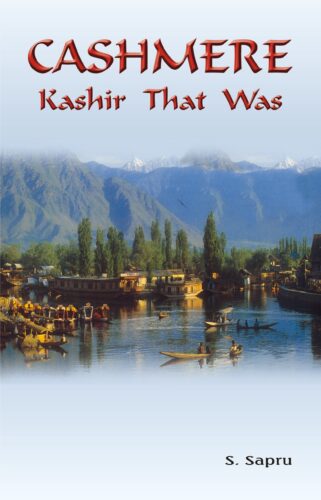
Original inhabitants now living as refugees in their own land this is the plight of Kashmiri Pandits now. This book describes the life, customs and traditions of the half-a-million people of this community, and their march from medieval times into the modern age.
India is a land of communities, and Kashmiri Pandits are one of them. Though they are the original inhabitants of the Kashmir valley, famous the world over for its beauty and learning, they are living in their own country as refugees since 1989 due to religious persecution, ethnic cleansing and terrorism their only fault lay in their religion, Hinduism. This book describes basically the life and times of the half-a-million people of this community living in peace and harmony with nature. It also delves into the march of the people from medieval times into the modern age and the impact of transport and communication technologies that opened a window for information flow into the valley cocooned for so long due to the high mountains all around. Customs and traditions are described in a changing scenario brought about by the introduction of the English language in the late 19th century.
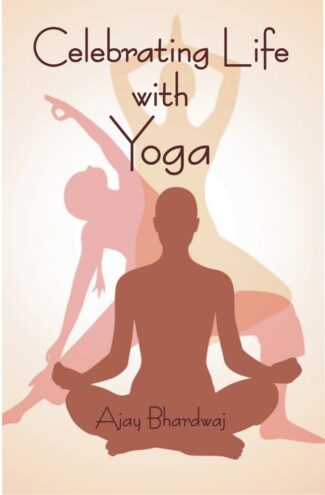
This volume addresses the wisdom of yoga with a practical approach. It unveils yoga in its true sense. Yoga is not meant for doing, but for being; being in our real nature, being in complete communion with the Supreme Consciousness, i.e. Truth, Bliss and Consciousness, enabling one to celebrate his life.
This volume addresses the wisdom of yoga with a practical approach. While many people think of yoga simply as a series of postures and breathing exercises, which is only a part of the vast yoga wisdom, it unveils yoga in its true sense. Yoga is not meant for doing, but for being; being in our real nature, being in complete communion with the Supreme Consciousness, i.e. Truth, Bliss and Consciousness.
Yoga helps one to discover oneself who am I? And the moment we know who we really are, every moment of life becomes a celebration. Yoga is thus the key to celebrating the life festival. Giving an introduction to the origin, history, traditions and different paths and aspects of yoga, the book authoritatively answers the basic questions: how can we apply yoga in our personal, family and social life?, what are the causes of suffering?, how can we live a stress-free and blissful life? and how can we attain the supreme goal of life, i.e. Self-realization, God-realization?
As the book is designed to conform to the course contents of yogic science of Indian universities, it will be of great use to students, academicians and yoga aspirants alike.

This book makes an in-depth study of the history of evolution, penetration and growth of nagasvaram into the cultural moorings of south India. It makes a systematic study of nagasvaram from different perspectives, its accompanying instruments, its relevance in temple festivals, marriages, the traditions associated, its prevalence and acceptability among south Indian states. It also introduces the all-time great maestros of nagasvaram.
Nagasvaram, worlds loudest non-brass acoustic instrument, is known as mangala vadyam (auspicious instrument), and raja vadyam (king of all instruments). This popular wind-group musical instrument is well known all over the south Indian states, more specifically in Tamil Nadu. Its origin is associated with the Thiruvarur Temple and its legacy continued all through the Pallavas, Colas, Pandyas, Nayakas, and Marathas. It has imprinted its sheen on all the rituals, especially, on the temple festivals and marriages.
This book makes an in-depth study of the history of evolution, penetration and growth of nagasvaram into the cultural moorings of south India over a period of 800 years. It makes a systematic study of nagasvaram (myths associated with it, its making, types, etc.), its accompanying instruments, its relevance in temple festivals, marriages, the traditions associated with nagasvaram, its prevalence and acceptability in Andhra Pradesh, Karnataka and Kerala, in addition to Tamil Nadu where it rules the roost. It widely introduces the great maestros of nagasvaram, for whom it was a nishkama karma.
Kings, temples and mathas were the promoters of this blissful instrument. At present this artform faces severe challenges from the all-pervasive Western musical instruments. The author suggests ways and means of how to maintain the legacy of nagasvaram live, and the need to preserve the rich heritage of our musical tradition for the benefit of our posterity to realize the Supreme Bliss in their life.
This book, rare of its kind, will enthrall those who are keen on instrumental music, especially the faculty, students, and professionals in the field of music, religion and art.

This book makes an in-depth study of the history of evolution, penetration and growth of nagasvaram into the cultural moorings of south India. It makes a systematic study of nagasvaram from different perspectives, its accompanying instruments, its relevance in temple festivals, marriages, the traditions associated, its prevalence and acceptability among south Indian states. It also introduces the all-time great maestros of nagasvaram.
Nagasvaram, worlds loudest non-brass acoustic instrument, is known as mangala vadyam (auspicious instrument), and raja vadyam (king of all instruments). This popular wind-group musical instrument is well known all over the south Indian states, more specifically in Tamil Nadu. Its origin is associated with the Thiruvarur Temple and its legacy continued all through the Pallavas, Colas, Pandyas, Nayakas, and Marathas. It has imprinted its sheen on all the rituals, especially, on the temple festivals and marriages.
This book makes an in-depth study of the history of evolution, penetration and growth of nagasvaram into the cultural moorings of south India over a period of 800 years. It makes a systematic study of nagasvaram (myths associated with it, its making, types, etc.), its accompanying instruments, its relevance in temple festivals, marriages, the traditions associated with nagasvaram, its prevalence and acceptability in Andhra Pradesh, Karnataka and Kerala, in addition to Tamil Nadu where it rules the roost. It widely introduces the great maestros of nagasvaram, for whom it was a nishkama karma.
Kings, temples and mathas were the promoters of this blissful instrument. At present this artform faces severe challenges from the all-pervasive Western musical instruments. The author suggests ways and means of how to maintain the legacy of nagasvaram live, and the need to preserve the rich heritage of our musical tradition for the benefit of our posterity to realize the Supreme Bliss in their life.
This book, rare of its kind, will enthrall those who are keen on instrumental music, especially the faculty, students, and professionals in the field of music, religion and art.
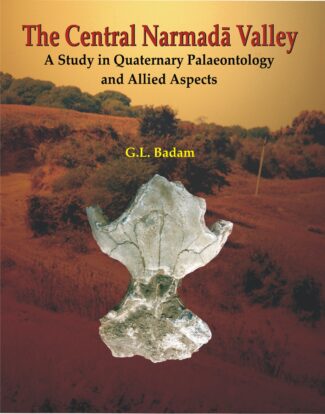
The book is the first attempt at studying a small stretch of the Narmada Valley from a multidisciplinary point of view incorporating the results of archaeology, geology, palaeontology and taphonomy. The modern analogies attempt to build up a palaeoecological model for Narmada and its surrounding areas including the rock shelter sites.
The book The Central Narmada Valley: A Study in Quaternary Palaeontology and Allied Aspects is the first attempt at studying a small stretch of the valley from a multidisciplinary point of view incorporating the results of archaeology, geology, palaeontology and taphonomy. New techniques and parameters have been applied to study and re-interpret these areas. This book also summarizes the morphology, distribution pattern and evolutionary history of certain extinct animals in relation to cultural development. With the help of modern analogies, the book attempts to build up a palaeoecological model for Narmada and its surrounding areas including some of the rock shelter sites. The book extends the dimensions of understanding the life history of Narmada and its tributaries, not only by discovering and reinterpreting various biological and cultural events, but also by seeking to understand varied aspects like river behaviour, flood history and man-land relationship during the past. The book should prove useful to students and researchers of river valley cultures in general and to those of Narmada Valley in particular.
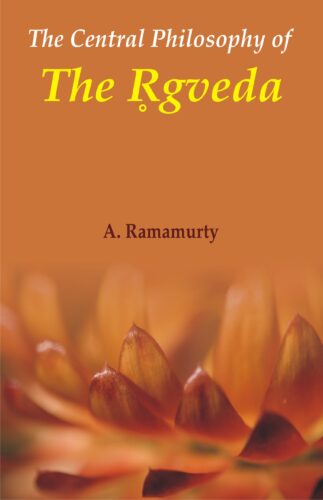
The book deals chiefly with the Rigvedic concept of divine, and the mode of divine revelation to the Vedic seers. It is a work of its kind in the field of Vedic Interpretation and offers a new perspective and direction to understanding the meaning of Vedic thought and symbolism.
Rigveda, a collection of hymns which are primarily prayers and praises addressed to various deities, is a religious/spiritual classic which influenced the formation and development of Indian way of life and culture. The concept of divine is central to it. The meaning of divine though has undergone significant changes in the long history of Hinduism depending upon its interaction with other world religions, the basic Vedic idea of divine still remains central to the Hindu concept of divine or God.
In this work we discuss mainly the meaning of divine and the mode of its revelation to the seers of the Rigveda in the state of divinely inspired devotion. This is what the Veda reveals or says about itself. To understand this claim of the Veda requires a deep understanding of the Vedic symbolism employed in communicating the meaning of divine inspiration. The seer-poets resort to symbolic use of language to communicate their vision of the divine, the birth of divine consciousness in them and its expression in the form of hymns. By closely following the text of the Rigveda, one can understand the symbolic use of certain words, and appreciate the meaning of the Veda which would otherwise be highly obscure and utterly unintelligible. Unless we understand the meaning of divine and the mode of its revelation to the Vedic seers it is difficult to understand and appreciate the meaning of the Veda or to interpret it. The Veda in its literary form comes into existence when the divinely inspired devotion is expressed in the form of prayer or hymns. When divine inspiration is offered back to the divine in the form of prayer and praise, human life finds its supreme fulfilment, and its attitude to world or nature gets transformed into one of reverence and worship.
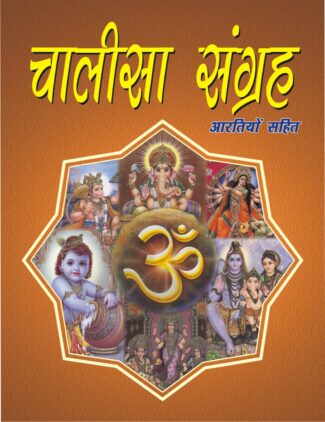
This book is a collection of the stutis (chalisas) of Lord Ganesh, Hanuman, Shani, Batuk Bhairav, Siva, Krishna at one end and Goddess Lakshmi, Durga, Vindhyeshvari, Gayatri, Sarasvati at the other. All these chalisas in a single book makes it unique.
This book is a collection of the stutis (chalisas) of Lord Ganesh, Hanuman, Shani, Batuk Bhairav, Siva, Krishna at one end and Goddess Lakshmi, Durga, Vindhyeshvari, Gayatri, Sarasvati at the other. All these chalisas in a single book makes it unique.
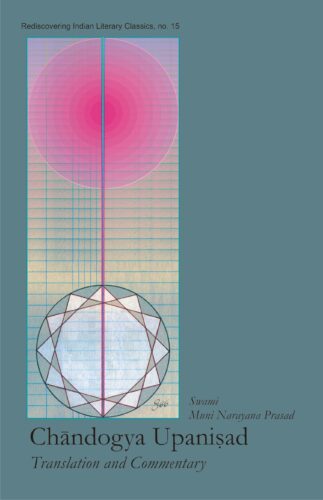
Chandogya is the most intriguing of all the Upanisads. It begins with directing the priests of a Soma-yaga to see the hidden wisdom-significance in what they perform and recite as a brute ritual. The present commentary explicates in a lucid way how thinking progresses in this Upanisad, along with unravelling its schematic, structural and dialectical intricacies, both subjective and objective, both universal and particular.
Chandogya is the most intriguing of all the Upanishads. It begins with directing the priests of a Soma-yaga to see the hidden wisdom-significance in what they perform and recite as a brute ritual. This sublimating of ritualism gradually leads us to perceiving the entire life system as a yaj¤a held in and performed by Brahman. The next step this perception leads us to is “sarvam khalvidam brahma” (everything here indeed is Brahman). Then the enquiry as to what this Brahman is, begins. The answer we arrive at is “tat tvam asi” (That thou art). Finally we realize “atmaivedam sarvam” (atma indeed is everything here, or myself indeed is everything here). From this self-identity with “everything,” with Brahman, we never return to our identity with individuated forms pertaining to the world of becoming. The present commentary explicates in a lucid way how thinking progresses in this Upanishad, along with unravelling its schematic, structural and dialectical intricacies, both subjective and objective, both universal and particular.
| There are no products |